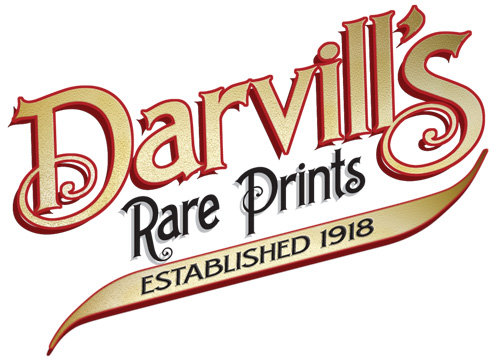A lovely view of New York City from the southwest, focusing on one of the most venerable forts in England’s American colonies. Fort George was located on the site originally occupied by Fort Amsterdam, erected by the Dutch West India Company in 1625-26 as the administrative and military hub for their New Netherlands colony. The Fort changed hands twice between 1664 and 1674, but from then on was held by the British until they surrendered New York at the close of the Revolution. It was demolished by the Americans in 1788, its rubble apparently used for the landfill that became Battery Park.
This view is undoubtedly based on A View of Fort George with the City of New York from the S W, drawn by John Carwitham and issued by Carington Bowles some time after 1764. Stokes and Haskell write of this prototype that it is “the earliest view of the city from the west” and “one of the most important, interesting, and sought-after prints of old New York, and rare in all states.” They argue that “the date depicted by the view is between 1724, when Trinity Church was extended to the eastward, which enlargement distinctly shows in the view, and March, 1741, when the church in the Fort, which also appears, was destroyed by fire.”
The engraving bears no information as to the engraver, publisher or work in which it was issued, but Stokes’ discussion of the print in his Iconography refers to “a very good reduction, with slight variations, engraved on copper, 8 3/8 x 5 5/8 inches,
in Russel[l]’s History of America, London, 1779 [but actually 1778].” (Vol. I p. 269)
References
Stokes, Iconography of Manhattan Island, vol. I p. 269. Shadwell, American Printmaking: The First 150 Years, #29; Stokes and Haskell, American Historical Prints, p. 13; and Stokes, Iconography, pp. 267-269 all describe the Carwitham-Bowles prototype. No edition listed in Cresswell, The American Revolution in Drawings and Prints.


